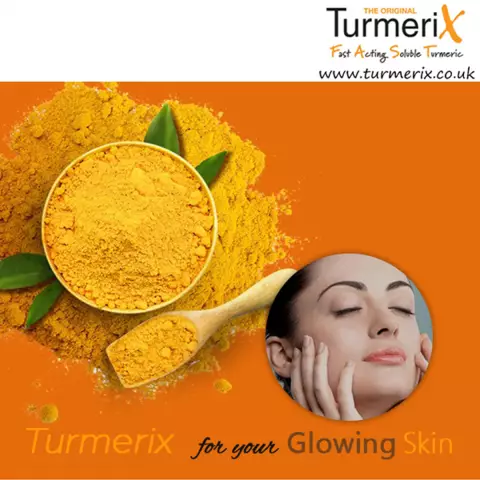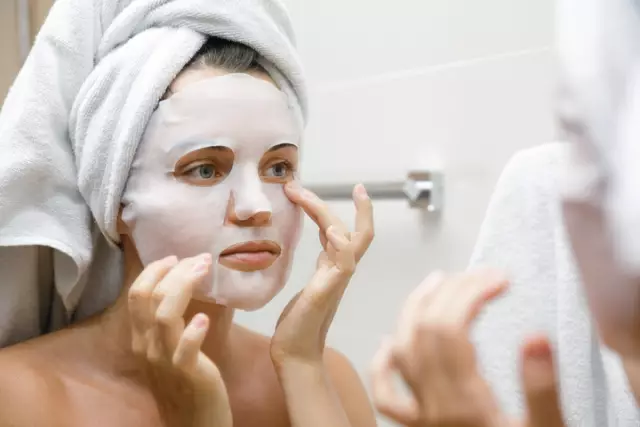- Author Rachel Wainwright [email protected].
- Public 2023-12-15 07:39.
- Last modified 2025-11-02 20:14.
Acne masks

When applying masks for acne, follow the basic rules:
- do not use mixtures to ingredients of which there is an allergic reaction;
- in the process of preparing masks based on clay and badyagi, do not use metal dishes;
- thoroughly cleanse the skin before the procedure;
- do not apply the mixture to the area around the eyes and lips;
- during the procedure, take a horizontal position;
- remove the mask along the directions of the massage lines;
- after the mask, apply a tonic.
In face masks for acne, substances are used that have cleansing, drying, anti-inflammatory, antiseptic, bactericidal, antifungal properties.
Acne mask recipes
According to reviews, drug-based acne masks are the most effective.
Streptocide-based acne face mask. It has a strong anti-inflammatory and drying effect. Ingredients: streptocide - 4 tablets, tooth powder - 1 teaspoon, calendula tincture - 1 teaspoon. Crush streptocid and mix with tooth powder, then gradually introduce calendula tincture until the mixture acquires the consistency of thick sour cream. With oily skin, the mask can be applied to the entire face, with dry skin - to the localization of rashes. Allow the mask to dry completely (20-30 minutes), then remove it with a dry sponge and rinse your face with water.
A powerful mask for acne and comedones. It has an antiseptic, anti-inflammatory, cleansing, regenerating effect, removes redness, regulates the secretion of the sebaceous glands, cleanses the pores. The main ingredients: zinc ointment (zinc oxide) - 20 g, sulfuric ointment (33%) - 25 g, salicylic ointment (10%) - 25 g, birch tar - 5-7 drops. To neutralize the unpleasant odor of birch tar, you can add 2 drops of essential oils of bergamot, juniper, rosemary to the mixture. To enhance the regenerating properties of the mask, you can add 5 drops of an oil solution of vitamin A (retinol acetate). All ingredients are thoroughly mixed, resulting in a creamy mass that must be applied at night to problem areas of the skin - T-zone, forehead, chin. The frequency of using the mask is once every two days. This acne maskaccording to reviews of those who use it regularly, it provides almost one hundred percent protection against all types of skin rashes.
Please note that medicated acne masks are not recommended during pregnancy and lactation.
Egg white acne masks are popular because they dry out and tighten pores. For example, a mask of the following composition helps well with acne, acne and redness: the protein of one egg, cosmetic tea tree oil (5 drops), starch. Beat the whites until a strong foam and add butter. Gradually add starch until the mixture reaches the consistency of sour cream. Apply on face for 15 minutes, rinse dry mask with warm water. The frequency of application is once every three days. Course - 10 masks, then a three-month break.
Clay and herbal acne mask. Main ingredients: celandine herb, calendula flowers, chamomile flowers, cosmetic clay. From herbs, taken in equal quantities, prepare a decoction, strain, cool to room temperature and mix with clay, bringing the mass to the consistency of thick sour cream. The exposure time is 20-30 minutes, until it dries completely.
Acne masks
Often, the victory over acne becomes the beginning of the next stage of the struggle for beauty - treatment of the consequences in the form of scars and spots. In this case, acne masks are no longer effective; additional care is needed with the help of special products, which include face masks.
Masks for acne marks have absorbing, regenerating, exfoliating, whitening, and enhancing local blood circulation properties.
Acne mask recipes

Mask based on honey and cinnamon. Nourishes, promotes skin regeneration, improves complexion, cleanses and tightens pores. Ingredients: equal amounts of honey and cinnamon powder. After thorough mixing of the components, a viscous mass with a pleasant aroma is obtained. The mask is applied to the skin with a spatula for 20 minutes, used 2-3 times a week. The mask may cause slight burning or itching. Since honey begins to melt on contact with the skin, the mass can drain from the face, therefore, you should protect your clothes with a napkin. It is undesirable to use the mask with dilated vessels on the face.
Lemon juice acne mask helps to whiten the skin. Ingredients: egg white, a teaspoon of lemon juice. Beat the protein a little with a fork and mix with the juice. Apply to face, rinse after drying. Instead of protein, you can use white clay diluted with water. But in this case, the mixture is applied only to the spots.
Medical paraffin is effective for removing stains and scars. It is melted in a water bath and applied directly to the scars with a cotton pad. After hardening, the paraffin is removed from the skin and stored until the next session. Be careful, the paraffin wax should be warm, but not hot. Before applying paraffin, it is recommended to lubricate the face with a cream.
Since the heated paraffin expands the capillaries, it should not be applied to areas with a vascular network.
To treat the effects of acne, masks are traditionally used for acne marks based on a freshwater sponge - badyagi, used in the form of a powder or paste. Badyagu is mixed with hot water until creamy and applied to the face in a warm form. Compress paper and a hot towel are placed on top. The exposure time is 30 minutes. The mask is washed off with warm water, the face is powdered with talcum powder. The mixture should be applied with caution, avoiding areas near mucous surfaces (nostrils, eyes). The mask can cause a burning or tingling sensation, the redness of the skin lasts up to two days.
An even more active mask for acne spots from badyagi and hydrogen peroxide. But in order to avoid burns, it should not be applied to the entire surface of the face, but directly to the spots.
The use of badyagi masks is contraindicated for dry thin skin, dilated capillaries and excessive facial hair growth.
Clay masks are used for acne and their consequences. Clay calms, heals, relieves inflammation. With fresh traces of acne, a mask made of high-quality clay on ordinary purified water can be quite effective. The addition of other active ingredients enhances the effect.
For example, a clay and badyagi mask for acne marks is used to treat old spots on the skin. The composition of the mask: white clay - 4 teaspoons, badyaga - 1 teaspoon, purified water - 2 tablespoons. The mixture is applied to the face for 15 minutes, then gently washed off with warm water. A moisturizer is applied to the dried skin. The effect of the mask is manifested by peeling over the next two days.
Acne masks and their effects, when used regularly, are a very effective skin care product at home.
Found a mistake in the text? Select it and press Ctrl + Enter.






